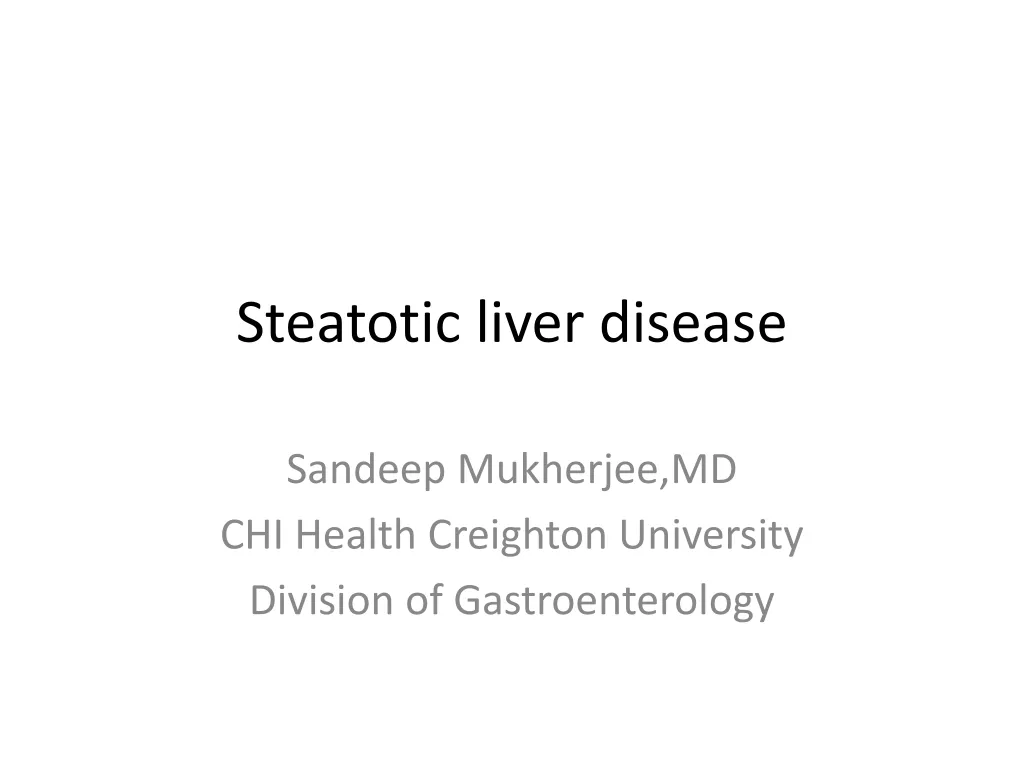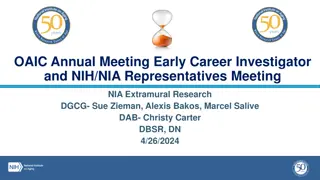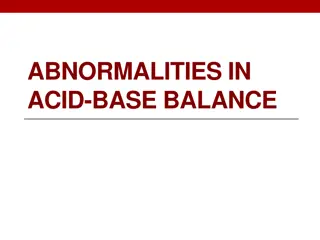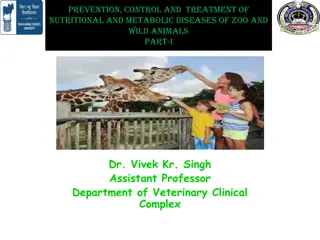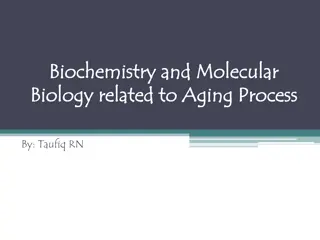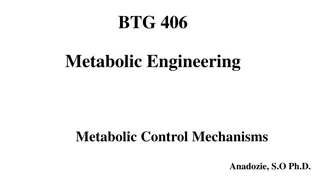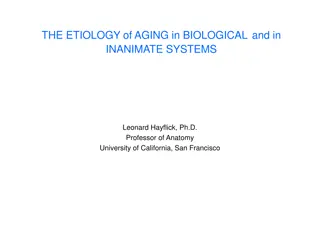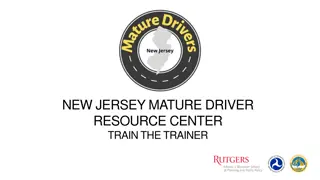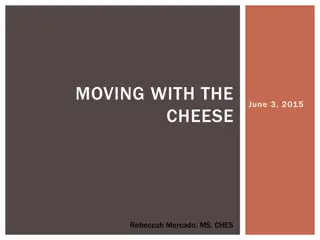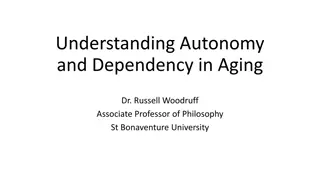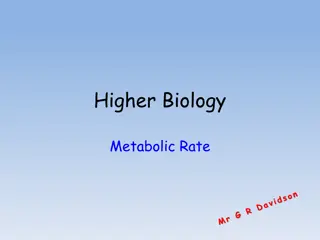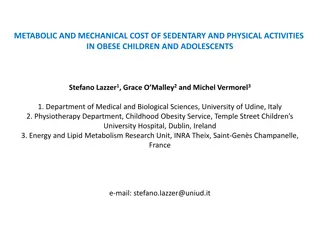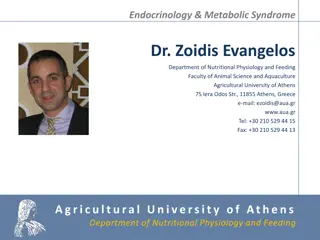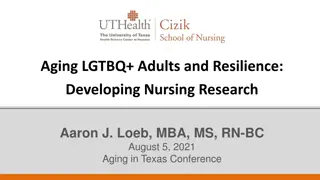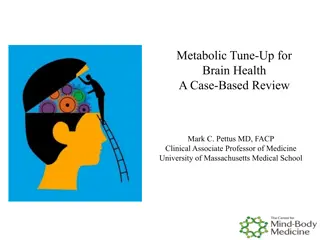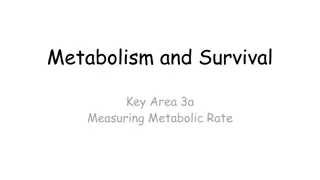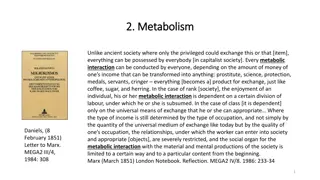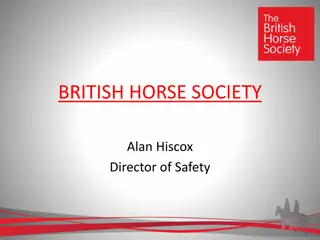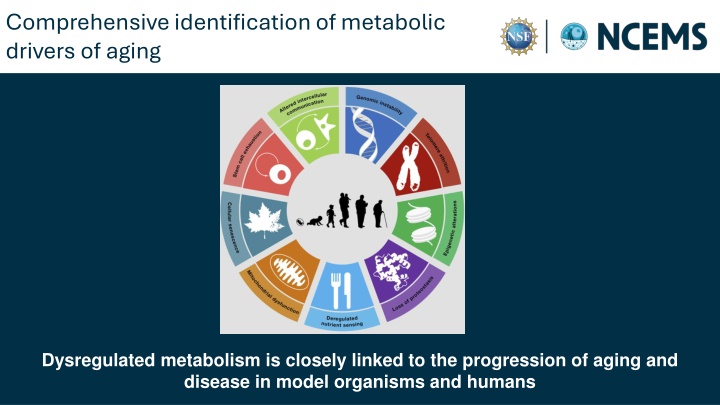
Uncovering Metabolic Drivers of Aging and Disease Progression
Explore the intricate connection between dysregulated metabolism and aging progression in both model organisms and humans. Discover the potential for intervention by identifying common metabolic drivers of aging through collaborative synthesis research using big data analysis and computational methodologies. Join the quest to unlock the secrets of aging and address open questions in understanding cellular aging hallmarks.
Download Presentation

Please find below an Image/Link to download the presentation.
The content on the website is provided AS IS for your information and personal use only. It may not be sold, licensed, or shared on other websites without obtaining consent from the author. If you encounter any issues during the download, it is possible that the publisher has removed the file from their server.
You are allowed to download the files provided on this website for personal or commercial use, subject to the condition that they are used lawfully. All files are the property of their respective owners.
The content on the website is provided AS IS for your information and personal use only. It may not be sold, licensed, or shared on other websites without obtaining consent from the author.
E N D
Presentation Transcript
Comprehensive identification of metabolic drivers of aging Dysregulated metabolism is closely linked to the progression of aging and disease in model organisms and humans
Comprehensive identification of metabolic drivers of aging Motivation Motivation Opportunities Opportunities All the data needed to solve the mysteries of aging is available. We now have the opportunity to unlock the secrets of life and understand how disruptions to homeostasis contribute to the aging process by tackling and integrating big data. By integrating computational methods, statistics, machine learning, and bioinformatics, we aim to identify common metabolic drivers of aging and highlight potential targets for intervention. What open questions can we address collaboratively as a community of synthesis researchers? Can we connect the hallmarks of cellular aging?
Posing the Problem Session Detailed Schedule TIME TIME DESCRIPTION DESCRIPTION DURATION (min) DURATION (min) Introduction Introduction: Session lead provides a brief overview of the format, goals, and topics for this session. Transition to Triads Transition to Triads: Participants are randomly split up into groups of three. Brainstorming Brainstorming: Each triad rapidly generates as many possible synthesis research questions as possible and then selects their top 1 or 2 questions. Report Back Report Back: Each triad shares their top 1 or 2 questions with the entire group. One person from each triad writes these top 1 or 2 questions on sticky notes and turns them in to the session lead. Break Break: Participants take a 15-min break while the session lead identifies four themes emerging from the questions. Transition Into 4 Groups: Transition Into 4 Groups: Participants choose one of 4 groups, with one group per theme Idea Refinement Idea Refinement: Participants answer the following questions: (1) What are the key synthesis questions in this theme? (2) How will the answers to these questions advance the field? (3) What computational methodologies could be used to answer these questions? (4) What datasets are available or needed to address these questions? Each research question and additional details will be written on a notecard, with each group producing 2-3 notecards. Idea Sharing, Feedback, and Action Idea Sharing, Feedback, and Action: Sharing: One person from each group takes 3.5 minutes to present no more than 2 key questions. Feedback: All participants have 90 s to ask questions. Action: One group member uploads 1-2 the refined questions, significance statements, and potential data to Qualtrics. 0:00-0:05 5 0:05-0:08 3 0:08-0:18 10 0:18-0:33 15 0:33-0:48 15 0:48-0:51 3 0:51-1:38 47 1:38-2:00 22
What you are doing now 0:05-0:08 3 min Transition to Triads Goal Goal: form random groups of three Tips Tips Triads should contain a good mix of expertise and background o If your random triad turns out to include participants with similar expertise, inform your session lead
What you are doing now 0:08-0:18 10 min Brainstorming Goal Goal: Each triad rapidly generates as many possible synthesis research questions as possible and then selects their top 1 or 2 questions Tips Tips Play off each other s ideas and expertise One person should not dominate the conversation Do not worry about data or potential significance and impact Avoid "shooting down" ideas
What you are doing now 0:18-0:33 15 min Report Back Goal Goal: (1) Each triad shares their top 1 or 2 questions with the entire group (2) One person from each triad writes these top 1 or 2 questions on sticky notes and turns them in to the session lead
What you are doing now 0:33-0:48 15 min Break 15 15- -min break min break
What you are doing now 0:48-0:51 3 min Transition Into 4 Groups Goal Goal: Choose one of four groups to join for Idea Refinement phase
What you are doing now Idea Refinement 0:51-1:38 47 min Goal Goal: Answer the following questions (1) What are the key synthesis questions in this theme? (2) How will the answers to these questions advance the field? (3) What computational methodologies could be used to answer these questions? (4) What datasets are available or needed to address these questions? One person per group writes each research question and additional answers on a notecard Tips Tips One person should not dominate the conversation Flesh out the questions more and think about their significance and influence on the field Do not be constrained by your uncertainty about whether particular data are available
What you are doing now 1:38-2:00 22 min Idea Sharing, Feedback, and Action Goal Goal: Sharing: Sharing: One person from each group takes 3.5 minutes to present no more than 2 key questions Feedback: Feedback: All participants have 90 s to ask questions to that group Action: Action: One group member uploads 1-2 refined questions, significance statements, and potential data to Qualtrics 2 key questions Tips Tips Make an independent Qualtrics submission for each synthesis question After you submit one, refresh the page to be given a clean form

